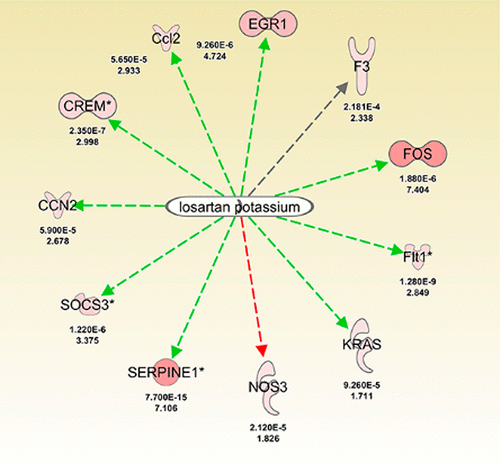当前位置:
X-MOL 学术
›
Chem. Res. Toxicol.
›
论文详情
Our official English website, www.x-mol.net, welcomes your
feedback! (Note: you will need to create a separate account there.)
Transcriptomic Characterization of Inhalation Phosphine Toxicity in Adult Male Sprague–Dawley Rats
Chemical Research in Toxicology ( IF 3.7 ) Pub Date : 2021-08-24 , DOI: 10.1021/acs.chemrestox.1c00108 Matthew A Hartog 1 , Rebecca J Lewandowski 1 , Christopher S Hofmann 1 , Ashley A Melber 1 , Cristin C Rothwell 1 , Katherine Sherman 1 , Jaclynn Andres 1 , Justin A Tressler 1 , Alfred M Sciuto 1 , Benjamin Wong 1 , Heidi M Hoard-Fruchey 1
Chemical Research in Toxicology ( IF 3.7 ) Pub Date : 2021-08-24 , DOI: 10.1021/acs.chemrestox.1c00108 Matthew A Hartog 1 , Rebecca J Lewandowski 1 , Christopher S Hofmann 1 , Ashley A Melber 1 , Cristin C Rothwell 1 , Katherine Sherman 1 , Jaclynn Andres 1 , Justin A Tressler 1 , Alfred M Sciuto 1 , Benjamin Wong 1 , Heidi M Hoard-Fruchey 1
Affiliation

|
Phosphine (PH3) is a highly toxic, corrosive, flammable, heavier-than-air gas that is a commonly used fumigant. When used as a fumigant, PH3 can be released from compressed gas tanks or produced from commercially available metal phosphide tablets. Although the mechanism of toxicity is unclear, PH3 is thought to be a metabolic poison. PH3 exposure induces multiorgan toxicity, and no effective antidotes or therapeutics have been identified. Current medical treatment consists largely of supportive care and maintenance of cardiovascular function. To better characterize the mechanism(s) driving PH3-induced toxicity, we have performed transcriptomic analysis on conscious adult male Sprague–Dawley rats following whole-body inhalation exposure to phosphine gas at various concentration–time products. PH3 exposure induced concentration- and time-dependent changes in gene expression across multiple tissues. These gene expression changes were mapped to pathophysiological responses using molecular pathway analysis. Toxicity pathways indicative of cardiac dysfunction, cardiac arteriopathy, and cardiac enlargement were identified. These cardiotoxic responses were linked to apelin-mediated cardiomyocyte and cardiac fibroblast signaling pathways. Evaluation of gene expression changes in blood revealed alterations in pathways associated with the uptake, transport, and utilization of iron. Altered erythropoietin signaling was also observed in the blood. Upstream regulator analysis identified several therapeutics predicted to counteract PH3-induced gene expression changes. These include antihypertensive drugs (losartan, candesartan, and prazosin) and therapeutics to reduce pathological cardiac remodeling (curcumin and TIMP3). This transcriptomics study has characterized molecular pathways involved in PH3-induced cardiotoxicity. These data will aid in elucidating a precise mechanism of toxicity for PH3 and guide the development of effective medical countermeasures for PH3-induced toxicity.
中文翻译:

成年雄性斯普拉格-道利大鼠吸入磷化氢毒性的转录组学特征
磷化氢(PH 3 )是一种剧毒、腐蚀性、易燃、重于空气的气体,是常用的熏蒸剂。当用作熏蒸剂时,PH 3可以从压缩气罐中释放或由市售金属磷化物片生产。尽管毒性机制尚不清楚,但 PH 3被认为是一种代谢毒物。 PH 3暴露会引起多器官毒性,目前尚未发现有效的解毒剂或治疗方法。目前的医疗主要包括支持性护理和心血管功能的维持。为了更好地表征驱动 PH 3诱导毒性的机制,我们对全身吸入暴露于不同浓度-时间产物的磷化氢气体后有意识的成年雄性 Sprague-Dawley 大鼠进行了转录组分析。 PH 3暴露会引起多个组织中基因表达的浓度和时间依赖性变化。使用分子途径分析将这些基因表达变化映射到病理生理反应。确定了指示心脏功能障碍、心脏动脉病和心脏扩大的毒性途径。这些心脏毒性反应与 apelin 介导的心肌细胞和心脏成纤维细胞信号通路有关。对血液中基因表达变化的评估揭示了与铁的吸收、运输和利用相关的途径的改变。血液中还观察到促红细胞生成素信号发生改变。上游调节因子分析确定了几种预计可以抵消 PH 3诱导的基因表达变化的治疗方法。 其中包括抗高血压药物(氯沙坦、坎地沙坦和哌唑嗪)和减少病理性心脏重塑的治疗药物(姜黄素和 TIMP3)。这项转录组学研究表征了参与 PH 3诱导的心脏毒性的分子途径。这些数据将有助于阐明 PH 3毒性的精确机制,并指导针对 PH 3引起的毒性制定有效的医学对策。
更新日期:2021-09-20
中文翻译:

成年雄性斯普拉格-道利大鼠吸入磷化氢毒性的转录组学特征
磷化氢(PH 3 )是一种剧毒、腐蚀性、易燃、重于空气的气体,是常用的熏蒸剂。当用作熏蒸剂时,PH 3可以从压缩气罐中释放或由市售金属磷化物片生产。尽管毒性机制尚不清楚,但 PH 3被认为是一种代谢毒物。 PH 3暴露会引起多器官毒性,目前尚未发现有效的解毒剂或治疗方法。目前的医疗主要包括支持性护理和心血管功能的维持。为了更好地表征驱动 PH 3诱导毒性的机制,我们对全身吸入暴露于不同浓度-时间产物的磷化氢气体后有意识的成年雄性 Sprague-Dawley 大鼠进行了转录组分析。 PH 3暴露会引起多个组织中基因表达的浓度和时间依赖性变化。使用分子途径分析将这些基因表达变化映射到病理生理反应。确定了指示心脏功能障碍、心脏动脉病和心脏扩大的毒性途径。这些心脏毒性反应与 apelin 介导的心肌细胞和心脏成纤维细胞信号通路有关。对血液中基因表达变化的评估揭示了与铁的吸收、运输和利用相关的途径的改变。血液中还观察到促红细胞生成素信号发生改变。上游调节因子分析确定了几种预计可以抵消 PH 3诱导的基因表达变化的治疗方法。 其中包括抗高血压药物(氯沙坦、坎地沙坦和哌唑嗪)和减少病理性心脏重塑的治疗药物(姜黄素和 TIMP3)。这项转录组学研究表征了参与 PH 3诱导的心脏毒性的分子途径。这些数据将有助于阐明 PH 3毒性的精确机制,并指导针对 PH 3引起的毒性制定有效的医学对策。











































 京公网安备 11010802027423号
京公网安备 11010802027423号